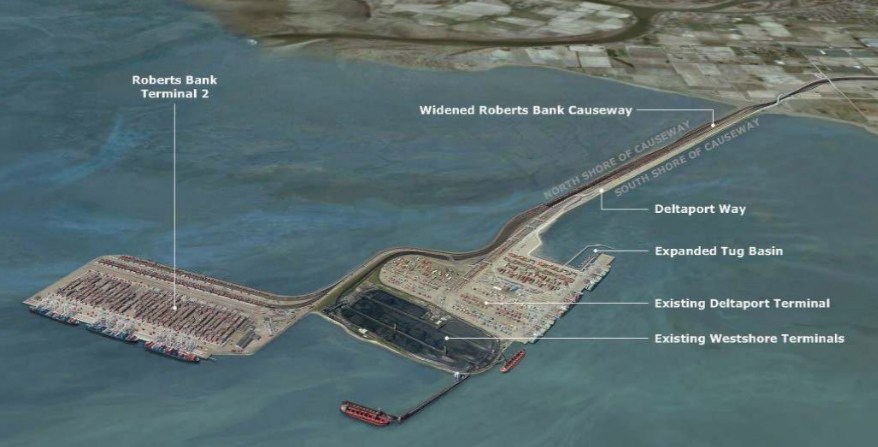
DELTA, British Columbia — The British Columbia government has provided environmental clearance for expansion of the container port at Roberts Bank, B.C., the Canadian Press reports, saying it could not prohibit the project from going forward in light of earlier federal approval.
The C$3.5 billion Roberts Bank Terminal 2 project was approved by the Canadian government in April, subject to some 370 conditions [see “Canadian government approves major West Coast container terminal,” Trains News Wire, April 21, 2023]. It will add some 2.4 million 20-foot container equivalents, or TEUs, of capacity to the existing facility, served by Canadian National, Canadian Pacific, and BNSF Railway.
Five environmental groups have launched a legal challenge to the expansion, but the provincial government said it could not prevent the project, which is almost entirely on federal land. It decided to issue an environmental assessment certificate with 16 conditions to offset adverse affects of the projects to protect provincial interests.














If Vancouver wants to play with the big boys they had no other means. The Geotechnical investigation is fascinating, deltic sediments, over till, very deep borings, state of the art. All in deep water, Canada builts amazing stuff!
Indeed, this is good news for the Port of Vancouver.
Dr. Güntürk Üstün
The Container Capacity Improvement Program (CCIP) is the Port of Vancouver’s long-term strategy to meet anticipated growth in container traffic, which is expected to triple by the year 2030. The program consists of projects that both improve the efficiency of existing infrastructure and explore opportunities to build new infrastructure as demand rises. CCIP projects include the Deltaport Terminal Road and Rail Improvement Project (DTRRIP) and the proposed Roberts Bank Terminal 2 project.
DTTRIP will result in infrastructure upgrades that would increase Deltaport’s container capacity by 600,000 TEUs (twenty-foot equivalent units), within the terminal’s existing footprint. The Roberts Bank Terminal 2 project is a proposed marine container terminal that could provide an additional capacity of 2.4 million TEUs per year to meet forecasted demand until 2030.
Dr. Güntürk Üstün